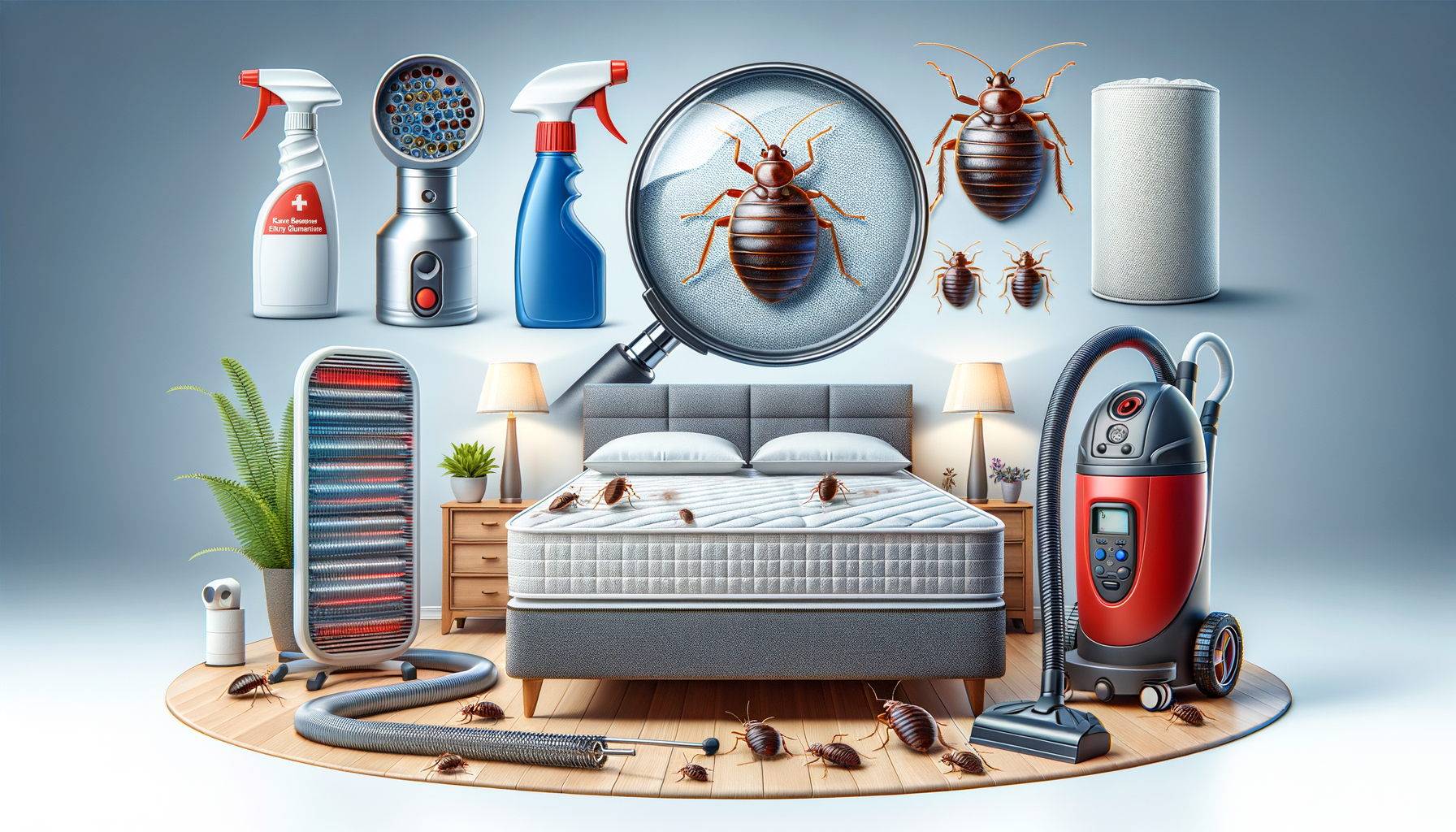5 Effective Strategies for Bed Bug Control
Discover effective strategies to control bed bugs and reclaim your home.

Introduction to Bed Bug Control
Bed bugs are small, elusive creatures that can cause big problems. These pests are notorious for their ability to hide in the tiniest of spaces and their resilience against many control methods. Understanding how to effectively manage and eliminate bed bugs is crucial for maintaining a healthy and comfortable living environment. This article explores five effective strategies for bed bug control, providing you with the knowledge needed to reclaim your home from these unwelcome guests.
Identifying Bed Bug Infestations
Before implementing control measures, it’s essential to correctly identify a bed bug infestation. Bed bugs are small, reddish-brown insects that are about the size of an apple seed. They tend to hide in cracks and crevices, making them difficult to spot. Common signs of an infestation include:
- Rusty or reddish stains on bed sheets or mattresses caused by crushed bugs.
- Dark spots, which are bed bug excrement and may bleed on the fabric like a marker would.
- Eggs and eggshells, which are tiny (about 1mm) and pale yellow skins that nymphs shed as they grow larger.
- A musty odor from the bugs’ scent glands.
Once you have identified the presence of bed bugs, it’s time to take action. Early detection and intervention are key to preventing the spread of these pests throughout your home.
Non-Chemical Bed Bug Control Methods
There are several non-chemical methods available for controlling bed bugs that are both effective and environmentally friendly. These methods are often the first line of defense and include:
- Heat Treatment: Bed bugs cannot survive extreme temperatures. Washing infested items in hot water and drying them on the highest dryer setting can help eliminate these pests.
- Vacuuming: Regular vacuuming can help remove bed bugs from carpets, floors, and other surfaces. Pay special attention to seams, tufts, and folds of mattresses, and the edges of carpets.
- Encasements: Mattress and box spring encasements can trap bed bugs inside, preventing them from feeding and eventually killing them.
- Steam Cleaning: The high temperatures from steam cleaners can kill bed bugs on contact. This method is particularly useful for treating furniture and other items that cannot be laundered.
These methods can be combined for greater effectiveness, especially in the early stages of an infestation.
Chemical Treatments for Bed Bug Control
When non-chemical methods are not sufficient, chemical treatments may be necessary. It’s important to use these treatments responsibly and according to the manufacturer’s instructions. Common chemical treatments include:
- Insecticides: Various insecticides are available for bed bug control, including pyrethroids, desiccants, and biochemicals. Each type works differently, so it’s crucial to choose the right one for your situation.
- Professional Pest Control Services: Hiring a professional pest control service can ensure that the treatment is thorough and effective. Professionals have access to more potent insecticides and specialized equipment.
- Residual Sprays: These sprays can be applied to areas where bed bugs are likely to hide. They continue to kill bed bugs over time, providing ongoing protection.
Remember to always prioritize safety when using chemical treatments and consider consulting a professional if you are unsure about the process.
Preventing Future Bed Bug Infestations
Once you have successfully eliminated bed bugs from your home, it’s important to take steps to prevent future infestations. Here are some preventive measures you can implement:
- Regular Inspections: Conduct routine inspections of your home, especially after traveling, to catch any potential infestations early.
- Reduce Clutter: Clutter provides hiding places for bed bugs. Keeping your home tidy can make it less appealing to these pests.
- Use Protective Covers: Encase mattresses and pillows in protective covers to prevent bed bugs from taking up residence.
- Be Cautious with Secondhand Items: Inspect secondhand furniture and clothing carefully before bringing them into your home.
By staying vigilant and maintaining a clean living environment, you can significantly reduce the risk of another bed bug infestation.
Conclusion: Reclaiming Your Space
Dealing with a bed bug infestation can be a daunting task, but with the right strategies and a proactive approach, you can successfully reclaim your home. By combining identification, non-chemical and chemical treatments, and preventive measures, you can effectively control bed bugs and enjoy a pest-free environment. Remember, early detection and consistent effort are key to keeping these unwelcome guests at bay.